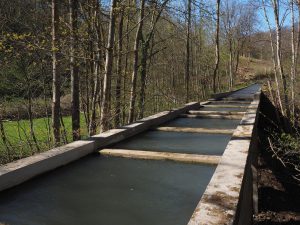Last Updated on August 4, 2022
What are the Branches of Civil Engineering?
Civil engineering is widely considered as one of the most significant engineering disciplines on a global scale. The industry is concerned with resolving real-world challenges by planning, building, managing, and sustaining infrastructure that is critical to the growth of countries and the support of modern society. Buildings, bridges, highways, airports, dams, irrigation systems, flood control works, and so on are all examples. Civil engineers are at the forefront of technological advancement in our communities. While civil engineering is an occupation that focuses on the construction of physical man-made buildings, it is a very wide field with several sub-disciplines. We’ve covered some of the most important types of civil engineering in this article.
1. Structural Engineering
Structural engineers work on the maintenance, analysis and design of structures such as buildings, bridges, dams and skyscrapers. These systems are built to meet budget constraints as well as strength loading and flexibility considerations from a variety of sources. They must take into account the conditions that their structure would be subjected to, such as loads from humans and cars, as well as environmental loads such as snow, wind and earthquake.

Structural engineers can also be interested in a variety of other structural engineering projects, such as the construction of telephone towers, tunnels, retaining walls, and other structures. A structural engineer is likely to be interested anywhere a building must be designed to withstand loads. To learn more about the differences between civil engineering and structural engineering, check here.
2. Transportation Engineering

Transportation engineering and traffic engineering are still one of the most important types of civil engineering. Engineers in this field plan, construct, and operate all modes of public transit around the world, such as highways, railways, ports, and airports.
Their goals are to increase improved traffic flow, minimize traffic congestion, and reduce the likelihood of collisions occurring. This may be accomplished by either designing an entirely new model or modifying an existing one. Yet, in order to successfully develop transportation connectivity, engineers must weigh a number of considerations, including the new system’s financial, political, and ethical implications.
Planning, in addition to design, is an essential factor in deciding the most efficient routes and modes of transportation for a given location.
3. Construction Engineering
Construction engineers are on-site engineers who ensure that quality and best maintenance practices are followed when designing any building. They are usually hired by contracting firms who construct buildings for consultancy or design-build firms. The construction engineers shall ensure that a project is built safely and that red flags are not produced while building.

They are needed for any building project such that a wide variety of projects can be developed before them. Evaluation of logistical activities, contract analysis, inspection of steel and concrete works and contractor coordination are likely to be among their regular responsibilities. They must also ensure that tasks are done in a timely and secure manner.
4. Coastal Engineering

Coastal engineering is a branch of civil engineering that is responsible for the planning, design, construction, and maintenance of shoreline structures. This includes control of shoreline erosion; development of the navigation channels and ports; safeguard against floods from hurricanes, tides and even tsunamis; better coastal recreation; and management of pollutants of marine area in the immediate vicinity. Coastal infrastructure usually necessitates the construction of foundations and required types of shuttering as well as the transportation and possible stabilization of beach sand and other coastal sediments.
5. Environmental Engineering
Environmental engineers are in charge of observing and reducing possible danger to the environment. They are also in charge of assisting with the conservation of natural areas and ensuring that construction sites, water sources, and air are free of pollution and environmental impact. Environmental engineers must have a good basis in science and mathematics, including hydrology, drainage, precipitation and atmospheric science.

In other words, this sub-discipline of civil engineering focuses on developing strategies for preserving densely inhabited environments and avoiding pollutants from harming the ecosystem. Environmental engineers perform in-depth analyses and design solutions to a broad variety of environmental issues. They are responsible for solid waste disposal and maintenance, as well as the treatment of water sources and the improvement of water and air quality.
6. Geotechnical Engineering
The engineer studies soil, structures, and bearing capacities in geotechnical engineering. The engineer will research the behavior of earth materials and their effects on the construction of a building. They plan foundations, determine pavement strengths and levels, and help in the design of bridges, tunnels, embankments, levees, mines, and other structures using their knowledge of soil strength and structural design.

Their knowledge of soil, its strength, how it reacts under stress, and when it’s saturated is crucial to almost every building project. Their foundation model will extend beyond buildings to include cranes, platforms, and other structures.
7. Water Resources Engineering
The utilization and control of land and water sources in rural and urban watersheds is the subject of water resources engineering. Water resources engineers must create technologies that are both environmentally and commercially feasible in order to meet the needs of an increasing population and a growing market for clean water. Water resources engineering is a complex blend of civil engineering, environmental engineering, agriculture, planning, and geography that is best suited to meet society’s concerns and needs about water.

Water resources engineers spend a lot of their time designing and managing built infrastructure to accomplish these goals. Undergraduates and graduates with a focus on water resources engineering may find work in engineering consultancy companies as well as government agencies responsible for providing water or coping with its hazards.
8. Earthquake Engineering
Earthquake engineering has been developed from a series of prescriptive provisions aimed at indirectly providing life protection to performance-based methods that take into account a variety of performance goals, such as minimizing the facility’s maintenance expense across a number of earthquake shaking intensities. Performance-based techniques provide many advantages: they have a more effective means to design structural mechanisms in order to meet higher performance goals, and they take into account a wider range of performance indicators, allowing stakeholders to make more informed risk-based decisions.

Although engineers are familiar with performance metrics like drift, acceleration, and strain, most political leaders prefer performance metrics like downtime or repair expenses, which are more closely related to business decisions.
Consistently considering seismic hazard, structural behavior, damage, and outcomes, so that a truly probabilistic statement of expected structural performance can be made, has been an engineering challenge.
9. Urban and Municipal Engineering
Municipal engineering and urban engineering are types of civil engineering which involve environmental problems that are the responsibility of governments, as well as tasks that improve society’s quality of life. Municipal engineering is responsible for a wide range of municipal functions, including waste collection and recycling, park maintenance, water delivery infrastructure, water storage, and other related duties.

Urban engineers help to define the physical environment of the city through planning, designing, building/constructing, running, and managing facilities such as buildings and highways. On the one side, this technology, through pervasive transit and connectivity networks, promotes social and economic connections within the urban habitat. In the other hand, by providing drinking water, air quality, and waste disposal, it has a significant impact on human wellbeing and ecological balance within the urban system.
What countries have highest demand for civil engineers?
- Norway
- Canada
- Australia
- USA
- Netherlands
- Germany
- France
- United Kingdom
What countries are best to study civil engineering?
- New Zealand
- Germany
- Singapore
- China
- Japan
- Australia
- Canada
In this article, 9 types of civil engineering have been explained. Hope you enjoyed it!


Pingback: Surveying in Civil Engineering, Land Surveyors | techyildiz